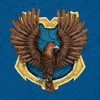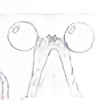HOME | DD
 Corallianassa — Maastricht formation: mosasaurs
Corallianassa — Maastricht formation: mosasaurs

#cretaceous #lizard #maastricht #ocean #sea #mosasaurs #maastrichtian #mosasauridae #apexpredator #mosasauroidea #maastrichtformation #typemaastrichtian #marinelizards #seagrassbeds
Published: 2019-01-04 10:55:48 +0000 UTC; Views: 11301; Favourites: 208; Downloads: 50
Redirect to original
Description
Probably the chart people will actually find interesting of the Maastricht formation because mosasaurs are big and lizards and that probably appeals more to my average watcher than a few random fishes.Mosasaurs were clearly the apex predators of the Maastricht sea 66 million years ago, with several highly adapted species patrolling the waters, with differing niches and habitat preferences to reduce intraspecific competition, though competition would have surely been present, as that is inevitable with so many large aquatic predators. The closest thing to competing with mosasaurs for an apex predatory title in the Maastricht sea were elasmosaurs, reaching body lengths of ~7.1 m. The elasmosaurs failed pretty miserably in this judging by the fact hadrosaur remains are several times more common than elasmosaur remains in this marine formation. So yeah elasmosaurs were only a sporadic faunal component, not very significant here. (See here the elasmosaur chart www.deviantart.com/paleosir/ar… )
Fairly large predatory sharks also occured in these waters, with the largest ones either being Archaeolamna kopingensis or Squalicorax pristodontus.
A.kopingensis is hard to scale due to no close relatives having complete fossils, but it must be somewhere between 3.4 and 4.somemediumdecimal m long. S.pristodontus was typically up to 3 m long but may have reached 4.8 m. Even a 4.8 m shark would pale in comparison to the large predatory mosasaurs.
Mosasaurus hoffmannii;
By far the most popular of the mosasaurs in general and by extension also of those from Maastricht due to it being the first named one, the namesake of the group and easily among the largest (probably the largest, with some *). The holotype is nearly 11 m long through the centra, making it a respectably sized animal. Larger referred specimens exist, most famously the ´Penza specimen` with its 171 cm long lower jaw, indicating a length of 12.9 m. The strong jaws with ziphodont teeth indicate it was hunting relatively large prey, so it probably consumed other mosasaurs regularly, even those of its own species. Sharks were probably a more important source of food because they were more common and generally smaller. The small eyes and relatively poorly developed balance organs indicate M.hoffmannii did not move in very complicated manners and hunted close to the surface during the day.
The Penza specimen has some traits such as swollen tooth bases that may prove to the phylogenetically significant, so it may not be a M.hoffmannii. but instead a large ziphodont ´Prognathodon` (aka a Liodon-morph thingy) More on that later.
Despite being a very large animal in a shallow sea, it was still one of the most common mosasaurs in the Maastricht formation.
Mosasaurus lemonnieri:
A closely related species, M.lemonnieri, is highly distinctive from M.hoffmannii and given its anatomy likely much closer to Plotosaurus. Unlike hoffmannii it has a proportionally tiny skull, resulting in a body length rivalling the king of mosasaurs, despite having a lower jaw a mere 120 cm long.
The teeth are more conical and more recurved than in M.hoffmannii, indicating it was eating slippery prey that had to be restrained and not necessarily cut up into more pieces. The pterygoidal teeth are more pronounced as well, indicating it capitalized more on ratchet feeding where it ´walked´ its jaws over medium sized prey. The longer tail and much longer fins with a higher aspect ratio, perfect for fast pursuit.
It is not very common in the Maastricht formation, but absolutely dominates a certain Belgian marine layer for some reason, where it was insanely succesful.
Cf. Prognathodon saturator
Two referred P.saturator specimens have been described from the Maastricht formation, a partial quadrate and a mandibular ramus. The quadrate has features that are seen only in P.saturator but it is not a perfect fit, so I would not be surprised it it was some closely related but different species (possibly a chronospecies). The quadrate specimen is smaller than the holotype, with a skull ~107 cm long in my scaling.
The ramus is interesting because it looks very M.hoffmannii-like, but has features that are congruent more with Prognathodon. I see a pattern here, same as with Penza....what if it is neither hoffmannii nor saturator. We´ll see. It is also massive just like the Penza specimen. In fact it is the same size as the Penza specimen roughly, or even a few % larger.
P.saturator would have been an offshore predator that likely preferred deeper waters than M.hoffmannii , and certainly different, tougher prey.
´´Liodon`` sectorius:
L.sectorius is a rare species of mosasaur that also possibly preferred deeper water than hoffmannii and Plioplatecarpus, and it was not common in the Maastricht formation (only represented by a dentary and a few isolated teeth - only more common than Cf. P.saturator). The Maastricht material did not come from very gigantic specimens, capping at around 7 m TL. A possible referred and undescribed L.sectorius from the underlying Gulpen fm reaches a length of around 10 m possibly, when going by press reports on skull size (~125 cm).
L.sectorius probably preferred softer prey than P.saturator and smaller prey than M.hoffmannii, probably quite generalized.
Carinodens belgicus:
The smallest mosasaur, and a very specialized one at that. This is a rare species but one with a very wide geographic distribution, basically spanning the Northern hemisphere. All material of it are just isolated teeth and dentaries. Nothing more. This small aquatic lizard had strong crushing dentition in the back of the mouth, and more gripping teeth in the front for manipulating food. Probably ate lots of small clams, crustaceans etc. but also fishes.
Only a few teeth and dentaries are known from the Maastricht formation.
Plioplatecarpus marshi:
One of the more common mosasaurs, roughly tied with M.hoffmannii in the Maastricht formation. It was a medium sized (~5.2 m) mosasaur that was highly adapted for fast and agile aquatic locomotion, with its massive tail and pectoral flippers as well as complex inner ear for terrific sense of movement and large partially forward facing eyes. Given its small skull (62 cm) with extremely recurved teeth it likely caught slippery, fast prey such as fishes and cephalopods among the seagrass beds and reefs of the formation.
special thanks to for making the P.marshi skeletal and credit to for the M.hoffmannii skeletal.
Related content
Comments: 61

If you mean how I made the square grid for this comparison, I used the render > pattern > grid function on GIMP
👍: 0 ⏩: 2

But it seems that I can't save the file with the grid.
👍: 0 ⏩: 1

I never had that problem so idk how I can help.
👍: 0 ⏩: 1

I fixed that a while after. Thanks anyway!
👍: 0 ⏩: 1

Ok nevermind, but if, tell me.
👍: 0 ⏩: 0

I have 1 question. But before I ask this, I have to say that this is amazing. How long did M.conodon get? I made a M.conodon schematic and I put it as a 7 metres long one. Is it ok?
👍: 0 ⏩: 1

Thank you!
MOR 006 has a 97.7 cm long skull, which would result in an animal 6.8-6.9 m long based on M.missouriensis and 7.8 m based on M.hoffmannii. M.missouriensis is certainly not a bad base, so 7 m is certainly a plausible estimate. I saw your diagram and I think it is pretty good, nice job.
👍: 0 ⏩: 2

So from mosasaurini, M.conodon was one of the smaller members, along with M.missouriensis, right?
👍: 0 ⏩: 1

Yes. Plotosaurus is also small.
👍: 0 ⏩: 1

How long it was? 8 metres or less?
👍: 0 ⏩: 1

Less, but I do not remember how large it was exactly.
👍: 0 ⏩: 1

Ok, Thanks! BTW, The largest marine reptile was Shastasaurus?
👍: 0 ⏩: 1

The Libstock and Aust specimens are probably the largest, could be Shastasaurus or a closely related form.
Of named marine reptiles yes Shastasaurus would be the longest and heaviest.
👍: 0 ⏩: 1

Nice! Thx for the info! So the 20 metres Shastasaurus is believable, right?
👍: 0 ⏩: 1

I think it was closer to 17 but for that you should best ask RandomDinos, I have never scaled it.
👍: 0 ⏩: 1

Nice, ok that's good. The next time I'll have a paleo-question, I will add a comment!
👍: 0 ⏩: 1

Sure, I am always open for questions.
👍: 0 ⏩: 1

You're welcome! Also thx and it seems that I was right!
👍: 0 ⏩: 0

Liodon is bij carlo met twee l’en geschreven
Ik wil al tijden iets met de maastricht formatie doen en ik denk dat dit wel gaat helpen!
👍: 0 ⏩: 1

oef
over twee maanden ben ik klaar met mn project over de Maastricht fm, zal vast helpen
👍: 0 ⏩: 0

I sense a severe innacuracy here.
The Plioplatecarpus should be above all the others, for it is flying dinosaur
👍: 1 ⏩: 1

cdn.discordapp.com/attachments…
👍: 0 ⏩: 0

Dead for over 30 million years.
Not a hint of ichthyosaurs in the maastrichtian
👍: 1 ⏩: 1

Ah, Forgot. Thanks for the reminder
👍: 0 ⏩: 0

Mosasaurs always seem to top out at around the mass of a large orca (give or take a few tons). Why did they never reach the sizes achieved by physeteroids or sharks?
👍: 0 ⏩: 1

I think it is just coincidence
A double digit tonnage is not really needed, there are so many groups that never reached that mark. It is very much the exception rather than the norm, produced only in very specific conditions so it seems.
👍: 1 ⏩: 0

Are we sure that M. hoffmanni and M. lemonieri are even in the same genus?
Then again there are extant genera with crazy physical variation (see Panthera)...,
👍: 0 ⏩: 1

No we are definitely not. I had a discord convo with PWNZ3r-Dragons today where we hypothesized this:
cdn.discordapp.com/attachments…
with only beaugi, missourensis and conodon being Mosasaurus.
👍: 1 ⏩: 1

Hallie Street has much to say on this in her thesis, Moanasaurus has a number of species and M. conodon is close to Plotosaurus.
👍: 1 ⏩: 0

You do a good job of describing the probable dynamicisms of the ancient world
👍: 0 ⏩: 0

Very nice!
What other reasons do you think made the mosasaurs so successful?
👍: 0 ⏩: 2

I’ve heard some suggestions that if mosasaurs were anything like varanids they would have intelligence and complex behaviour as an edge, but given that complex behaviour seems near-universal in big pelagic predators (the extant ones at least) and that Plesiosauria also appear to have been relatively social, I don’t buy this argument.
👍: 0 ⏩: 0

I don´t know exactly, it is pretty interesting how quickly they rose to the top.
👍: 0 ⏩: 2
| Next =>























